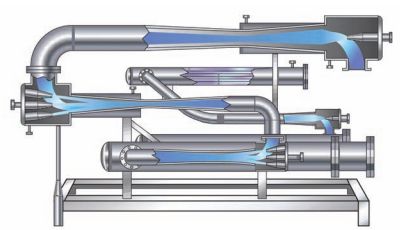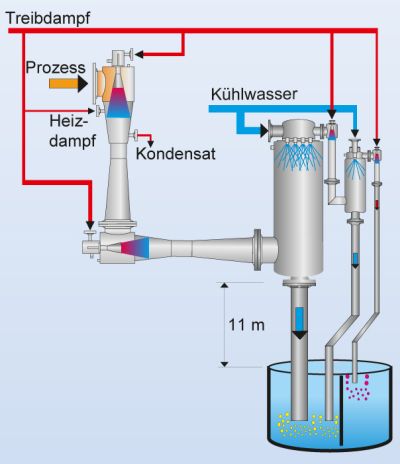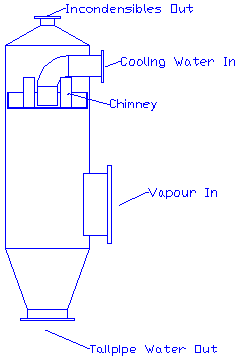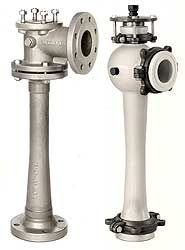Vacuum ejectors
An ejector is a type of vacuum pump producing a vacuum by means of the Venturi effect:- cheap and simple water aspirator commonly used in laboratories
- air ejectors used as a first stage and preventing cavitation in a liquid ring pump
- multistage steam ejectors vacuum system using inter-condensers for process applications up to 0.1 mbarA
- Simple way to create a vacuum, safe and reliable
- No moving Parts, nearly maintenance free
- Relatively unexpensive (the condensers are expensive)
- Corrosion resistant materials available: since steam ejectors have no moving parts they can be constructed in their entirety from almost any material that has sufficient durability.
- Very compact: not considering the source of the motive fluid, vacuum ejectors are more compact and lighter than a vacuum pump
- Steam ejectors can handle gas flows containing liquids, dust, or even solid particles that would damage or clog many other vacuum pumps.
- Vacuum ejectors are suitable for explosive (ATEX) applications.
- Contamination of the motive fluid, or contamination through the motive fluid
- Motive fluid consumption can have higher operating costs
- Steam ejectors have to be installed at elevation for condensate drainage (barometric leg of the inter-condensers)
nearly no limitation and two or more ejectors can be arranged in parallel.
vacuum (suction pressure) :
A single stage operating alone will produce pressures in the range of about 50 - 100 mbarA up to atmospheric pressure.
Two stages will produce pressures between 10 mbarA and 100 mbarA,
while three stages will produce between 1 mbarA and 30 mbarA.

Croll-Reynolds vacuum system with surface type condensers

Koerting vacuum system with spray condensers, two stages without inter-condenser spray condensers with barometric legs 4th stage as a lquid ring vacuum pump
Hybrid systems
Hybrid systems combine vacuum ejectors and liquid ring vacuum pumps. The liquid ring vacuum pump is more efficient for the last compression stage up to atmospheric pressure than an ejector. The ejector(s) in front of the system will help achieve a deeper vacuum, or will help to prevent a cavitation in the liquid ring pump.
nach oben

